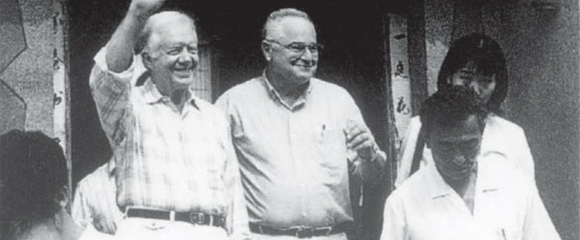3D printing technology guides heart surgery for Chinese baby
Updated: 2016-03-17 16:05
(Xinhua)
|
|||||||||
CHANGCHUN - Doctors have performed a successful surgery using a 3D-printed heart model on a nine-month-old baby suffering from a severe congenital heart defect (CHD) in Northeast China's Jilin province.
It was the first open heart surgery performed with the help of 3D printing technology in the province. The operation took place on March 11, and the infant has already been transferred to a general ward and is recovering.
The boy weighed 5.6 kilograms before surgery. He experienced shortness of breath after birth and was diagnosed with CHD.
"The defect was very rare and complicated," said Zhang Xueqin, the baby's surgeon and director of the pediatric cardiac surgery center at the People's Hospital of Jilin.
The tiny patient suffered from total pulmonary venous anomalous drainage, which means all four of his pulmonary veins were malpositioned. He also had an atrial septal defect, causing blood to flow between the upper chambers of the heart.
"He was taken to the hospital and was critically ill with heart failure and severe pneumonia," Zhang said.
Because the boy is so young and small, it was difficult to develop the best surgery plan using just an ultrasound examination, he said.
If treatment had been delayed, the baby's chance of dying before his first birthday would have been as high as 80 percent, he added.
To save the child, Zhang and his team turned to 3D printing. A full-sized heart replica modeled the boy's cardiac structure and helped the doctors plan the operation.
"With the model, we were able to know precisely where and how we should cut, and how big the incision should be," said Zhang. "And with such a thorough plan, we spent only half the time we had expected to complete the surgery."
China's first cardiac surgery using 3D technology is believed to have been on July 21, 2015, on a nine-month-old boy with CHD in east China's Jiangsu Province.
The technology will hopefully be more widely used in medicine in the future, said Zhang.
Related Stories
'Good' cholesterol not always protective for heart: study 2016-03-11 10:52
Money at heart of audition for companions 2016-03-10 08:08
Innovation at the heart of Guangdong's economic growth 2016-02-04 16:33
South China's food touches the heart 2016-01-22 08:40
Snow sculptures in Jilin that will melt your heart 2016-01-05 10:51
Heart attack takes Henderson at 57 2015-12-29 07:51
Today's Top News
A 24-year-old PKK member is Ankara bomber
China to lead development of Swiss SMEs
Putin says Russians to start withdrawing from Syria
Trump calls campaign 'a lovefest'
German voters batter Merkel over migrant policy
China condemns terrorist attack in Turkey
Growth focus
Opening a window on rural China
Hot Topics
Lunar probe , China growth forecasts, Emission rules get tougher, China seen through 'colored lens', International board,
Editor's Picks

|

|

|

|

|

|






